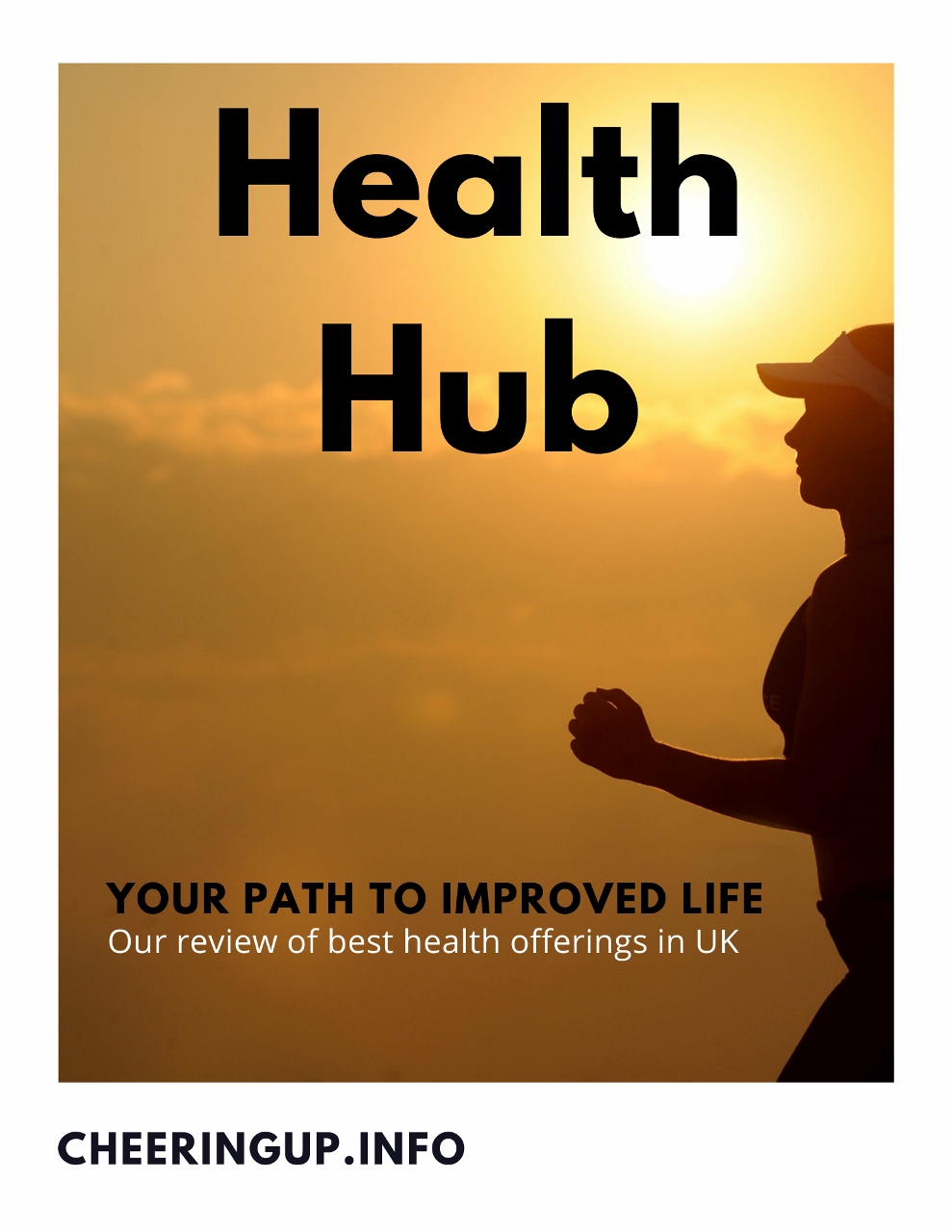Inflammation is the body’s natural response to injury or infection, but chronic inflammation can wreak havoc on our health. From aching joints to skin issues, the impact of persistent inflammation can be significant. So, can a fiery spice like cayenne pepper truly offer relief? Let’s delve into the science and explore how to harness the power of this pungent pepper to potentially ease inflammation.
Feeling the Heat: Can Cayenne Pepper Tame Inflammation?
The Fire Within: Understanding Cayenne Pepper
Cayenne pepper, a vibrant red chili pepper, packs a punch of flavour and a potent dose of capsaicin. Capsaicin is the compound responsible for the pepper’s heat and a significant contributor to its potential anti-inflammatory properties.
How Cayenne Pepper May Combat Inflammation
- Pain Relief: Capsaicin can desensitise pain receptors, offering relief from discomfort associated with conditions like arthritis.
- Reduced Inflammation: Studies suggest that capsaicin may help reduce the production of inflammatory compounds, potentially benefiting conditions like inflammatory bowel disease.
- Improved Blood Flow: By dilating blood vessels, capsaicin may enhance circulation, potentially aiding in the delivery of nutrients and the removal of waste products that contribute to inflammation.
Important Note: While promising, it’s crucial to consult with a healthcare professional before incorporating cayenne pepper into your health regimen, especially if you have any underlying health conditions or are taking medications.
Incorporating Cayenne Pepper into Your Diet: A Spicy Journey
Now, let’s explore some delicious and easy ways to add cayenne pepper to your meals:
1. The Classic Stir-Fry
- Ingredients:
- 2 tablespoons vegetable oil
- 1 onion, sliced
- 2 cloves garlic, minced
- 1 pound mixed vegetables (broccoli, carrots, bell peppers)
- 1 pound protein of your choice (chicken, tofu, shrimp)
- 1 teaspoon grated fresh ginger
- 1 tablespoon soy sauce
- 1 teaspoon honey
- 1/4 teaspoon red pepper flakes (adjust to taste)
- 1/8 teaspoon cayenne pepper
- Cooked rice or noodles for serving
- Instructions:
- Heat the oil in a large skillet or wok over medium-high heat.
- Add the onion and garlic and cook until softened, about 5 minutes.
- Add the mixed vegetables and cook for 5-7 minutes, or until tender-crisp.
- Add the protein and cook through.
- Stir in the ginger, soy sauce, honey, red pepper flakes, and cayenne pepper.
- Cook for 1-2 minutes more, or until the sauce has thickened.
- Serve over rice or noodles.
2. Spicy Salmon with Mango Salsa
- Ingredients:
- 4 salmon fillets (about 6 ounces each)
- 1 tablespoon olive oil
- 1 teaspoon ground cumin
- 1/2 teaspoon paprika
- 1/4 teaspoon cayenne pepper
- Salt and pepper to taste
- For the Mango Salsa:
- 1 ripe mango, diced
- 1/2 red onion, finely chopped
- 1/4 cup chopped fresh cilantro
- 1 tablespoon lime juice
- 1/4 teaspoon cayenne pepper
- Salt and pepper to taste
- Instructions:
- Preheat oven to 400°F (200°C).
- In a small bowl, combine the olive oil, cumin, paprika, and cayenne pepper.
- Season the salmon fillets with salt and pepper, then rub with the spice mixture.
- Bake the salmon for 12-15 minutes, or until cooked through.
- While the salmon bakes, make the mango salsa by combining all ingredients in a bowl.
- Serve the salmon with the mango salsa.
3. Creamy Coconut Curry Soup
- Ingredients:
- 1 tablespoon olive oil
- 1 onion, chopped
- 2 cloves garlic, minced
- 1 tablespoon grated fresh ginger
- 1 tablespoon curry powder
- 1 teaspoon ground cumin
- 1/4 teaspoon cayenne pepper
- 1 (14.5 ounce) can coconut milk
- 4 cups vegetable broth
- 1 (15 ounce) can chickpeas, drained and rinsed
- 1 cup chopped spinach
- Salt and pepper to taste
- Fresh cilantro for garnish
- Instructions:
- Heat the olive oil in a large pot over medium heat.
- Add the onion, garlic, and ginger and cook until softened, about 5 minutes.
- Stir in the curry powder, cumin, and cayenne pepper and cook for 1 minute more.
- Pour in the coconut milk and vegetable broth.
- Bring to a simmer, then add the chickpeas and cook for 5 minutes.
- Stir in the spinach and cook until wilted.
- Season with salt and pepper to taste.
- Garnish with fresh cilantro before serving.
4. Spicy Sweet Potato and Black Bean Burgers
- Ingredients:
- 2 large sweet potatoes, roasted and mashed
- 1 (15 ounce) can black beans, rinsed and drained
- 1/2 cup chopped onion
- 1/4 cup chopped bell pepper
- 2 cloves garlic, minced
- 1/4 cup bread crumbs
- 1 egg
- 1 teaspoon ground cumin
- 1/2 teaspoon chili powder
- 1/4 teaspoon cayenne pepper
- Salt and pepper to taste
- Olive oil for cooking
- Instructions:
- In a large bowl, combine the mashed sweet potatoes, black beans, onion, bell pepper, garlic, bread crumbs, egg, cumin, chili powder, cayenne pepper, salt, and pepper.
- Mix well until combined.
- Form the mixture into 4-6 patties.
- Heat a large skillet over medium heat with a drizzle of olive oil.
- Cook the burgers for 5-7 minutes per side, or until golden brown and cooked through.
- Serve on buns with your favorite toppings.
5. Roasted Vegetable Salad with a Spicy Vinaigrette
- Ingredients:
- 1 large sweet potato, cut into 1-inch cubes
- 1 large red onion, cut into wedges
- 1 red bell pepper, cut into strips
- 1 yellow bell pepper, cut into strips
- 1 zucchini, cut into rounds
- 2 tablespoons olive oil
- 1 teaspoon dried oregano
- 1/2 teaspoon salt
- 1/4 teaspoon black pepper
- 1/8 teaspoon cayenne pepper
- For the Vinaigrette:
- 2 tablespoons olive oil
- 1 tablespoon balsamic vinegar
- 1 teaspoon Dijon mustard
- 1/4 teaspoon honey
- 1/8 teaspoon cayenne pepper
- Salt and pepper to taste
- Instructions:
- Preheat oven to 400°F (200°C).
- In a large bowl, combine the sweet potato, red onion, red and yellow bell peppers, and zucchini.
- Drizzle with olive oil, oregano, salt, pepper, and cayenne pepper.
- Toss to coat.
- Spread the vegetables in a single layer on a baking sheet.
- Roast for 20-25 minutes, or until tender-crisp.
- While the vegetables roast, make the vinaigrette by whisking together all ingredients in a small bowl.
- Let the roasted vegetables cool slightly before tossing with the vinaigrette.
- Serve immediately.
6. Spicy Chicken and Avocado Wraps
- Ingredients:
- 4 boneless, skinless chicken breasts, grilled or baked
- 4 large flour tortillas
- 1/4 cup Greek yogurt
- 1 tablespoon lime juice
- 1/4 teaspoon cumin
- 1/8 teaspoon cayenne pepper
- Salt and pepper to taste
- 1 avocado, sliced
- 1/4 cup shredded lettuce
- 1/4 cup diced tomato
- 1/4 cup chopped red onion
- Instructions:
- In a small bowl, combine the Greek yogurt, lime juice, cumin, and cayenne pepper.
- Season with salt and pepper to taste.
- Slice the grilled or baked chicken into thin strips.
- Spread a tortilla with the yogurt mixture.
- Top with chicken, avocado, lettuce, tomato, and red onion.
- Roll up the tortilla tightly and enjoy.
7. Lentil Soup with a Kick
- Ingredients:
- 1 tablespoon olive oil
- 1 onion, chopped
- 2 carrots, chopped
- 2 celery stalks, chopped
- 2 cloves garlic, minced
- 1 teaspoon ground cumin
- 1/2 teaspoon chili powder
- 1/4 teaspoon cayenne pepper
- 1 cup dried green lentils
- 6 cups vegetable broth
- 1 (14.5 ounce) can diced tomatoes, undrained
- 1 bay leaf
- Salt and pepper to taste
- Chopped fresh parsley for garnish
- Sour cream or Greek yogurt (optional)
- Instructions:
- Heat the olive oil in a large pot over medium heat.
- Add the onion, carrots, and celery and cook until softened, about 5 minutes.
- Stir in the garlic, cumin, chili powder, and cayenne pepper and cook for 1 minute more.
- Add the lentils, vegetable broth, diced tomatoes, and bay leaf to the pot.
- Bring to a boil, then reduce heat to low, cover, and simmer for 20-25 minutes, or until the lentils are tender.
- Remove and discard the bay leaf.
- Season with salt and pepper to taste.
- Garnish with chopped fresh parsley and serve with a dollop of sour cream or Greek yogurt, if desired.
8. Spicy Tuna Salad Sandwiches
- Ingredients:
- 2 (5 ounce) cans tuna in water, drained
- 1/4 cup chopped celery
- 1/4 cup chopped onion
- 2 tablespoons mayonnaise
- 1 tablespoon Dijon mustard
- 1/4 teaspoon cayenne pepper
- Salt and pepper to taste
- 4 slices whole-grain bread
- Lettuce leaves (optional)
- Tomato slices (optional)
- Instructions:
- In a medium bowl, combine the tuna, celery, onion, mayonnaise, Dijon mustard, and cayenne pepper.
- Season with salt and pepper to taste.
- Mix well until combined.
- Spread the tuna salad on the bread slices.
- Top with lettuce and tomato, if desired.
- Enjoy immediately.
9. Chocolate Chili
- Ingredients:
- 1 tablespoon olive oil
- 1 onion, chopped
- 2 cloves garlic, minced
- 1 (15 ounce) can black beans, rinsed and drained
- 1 (15 ounce) can kidney beans, rinsed and drained
- 1 (10 ounce) can diced tomatoes, undrained
- 1 (4 ounce) can diced green chilies
- 1 tablespoon chili powder
- 1 teaspoon ground cumin
- 1/2 teaspoon cayenne pepper
- 1/4 teaspoon cocoa powder
- 1 cup vegetable broth
- Salt and pepper to taste
- Chopped cilantro for garnish
- Sour cream or Greek yogurt (optional)
- Instructions:
- Heat the olive oil in a large pot over medium heat.
- Add the onion and garlic and cook until softened, about 5 minutes.
- Stir in the black beans, kidney beans, diced tomatoes, green chilies, chili powder, cumin, cayenne pepper, and cocoa powder.
- Pour in the vegetable broth.
- Bring to a simmer, then reduce heat to low, cover, and cook for 15-20 minutes, or until the flavours have blended.
- Season with salt and pepper to taste.
- Garnish with chopped cilantro and serve with sour cream or Greek yogurt, if desired.
Beyond the Plate: Other Ways to Use Cayenne Pepper
- Topical Application: Capsaicin creams are available over-the-counter and can be applied topically to relieve pain associated with arthritis or muscle aches. Always follow the product instructions carefully.
- Cayenne Pepper Tincture: Some individuals use cayenne pepper tinctures diluted in water. However, it’s crucial to consult with a healthcare professional before using any herbal tinctures.
Important Considerations:
- Start Slow: If you’re new to consuming cayenne pepper, start with small amounts and gradually increase your intake as tolerated.
- Hydration: Drink plenty of water throughout the day, especially when consuming spicy foods.
- Listen to Your Body: If you experience any discomfort, such as heartburn, stomach upset, or excessive sweating, reduce your intake or discontinue use.
- Pregnancy and Breastfeeding: Pregnant or breastfeeding women should consult with their healthcare provider before using cayenne pepper.
- Medical Conditions: Individuals with certain medical conditions, such as gastrointestinal issues or heart problems, should consult with their healthcare provider before incorporating cayenne pepper into their diet.
Disclaimer: This article is for informational purposes only and should not be considered medical advice. Always consult with a qualified healthcare professional before making any changes to your diet or health regimen.
Conclusion
Cayenne pepper, with its fiery flavour and potential anti-inflammatory properties, can be a flavourful addition to your meals. By incorporating it into your diet in moderation, you may experience some of its potential health benefits. Remember to start slowly, listen to your body, and consult with a healthcare professional before making any significant dietary changes.
Please note: This article is for informational purposes only and should not be considered medical advice. Always consult with a qualified healthcare professional before making any changes to your diet or health regimen.
Get help to protect and grow your business faster with CheeringupInfo
Find out more about Lifestyle Improvement Club Corporate Membership
Subscribe for free lifestyle improvement tips reviews and money saving deals
Read more lifestyle improvement articles and watch videos for free
Spicing Things Up: Cayenne Pepper and Sexual Health
While research on the direct sexual benefits of cayenne pepper is limited, some anecdotal evidence and potential mechanisms suggest it might play a role in enhancing sexual experiences:
- Increased Blood Flow: As mentioned earlier, cayenne pepper can improve circulation. Enhanced blood flow to the genital area can potentially increase sensitivity and arousal in both men and women.
- Hormonal Balance: Some studies suggest that capsaicin, the compound in cayenne pepper, may help regulate hormones, including testosterone. Maintaining healthy hormone levels is crucial for sexual function in both sexes.
- Stress Reduction: Stress can significantly impact sexual desire and performance. Cayenne pepper’s potential to reduce stress hormones may indirectly contribute to a more relaxed and enjoyable sexual experience.
- Aphrodisiac Effect: The warming sensation caused by cayenne pepper can stimulate the senses and potentially enhance arousal.
Important Notes:
- More Research Needed: While these potential benefits exist, more scientific research is necessary to fully understand the effects of cayenne pepper on sexual health.
- Individual Responses Vary: The impact of cayenne pepper on sexual function may vary significantly from person to person.
- Consult a Healthcare Professional: If you have any concerns about your sexual health or are considering using supplements or dietary changes to improve it, consult with a healthcare professional or a qualified sex therapist.
Incorporating Cayenne Pepper for Potential Sexual Benefits:
- Start Gradually: Begin with small amounts of cayenne pepper in your diet and gradually increase your intake as tolerated.
- Spice Up Your Meals: Add cayenne pepper to your favorite dishes, such as stir-fries, soups, and stews.
- Explore Culinary Adventures: Experiment with spicy recipes to discover new and exciting flavors.
Remember:
- Moderation is Key: While cayenne pepper can offer potential benefits, excessive consumption may lead to discomfort or side effects.
- Listen to Your Body: Pay attention to how your body reacts to cayenne pepper and adjust your intake accordingly.
Disclaimer: This information is for general knowledge and informational purposes only and does not constitute medical advice. Consult with a qualified healthcare professional before making any decisions regarding your health or treatment.
Read more:
- Cayenne pepper for arthritis pain relief UK
- Benefits of cayenne pepper for inflammatory bowel disease
- How to use cayenne pepper for joint inflammation
- Cayenne pepper recipes for inflammation UK
- Is cayenne pepper good for chronic inflammation
Relevant hashtags:
- #CayennePepperBenefits
- #SpiceUpYourHealth
- #InflammationFighter
- #NaturalRemedies
- #HealthyLiving
- #CheeringupInfo
- #CheeringupTV
- #RetirementMagazine
- #RetirementTV
- #BestPricesGuide
How to take cayenne pepper to reduce inflammation?







